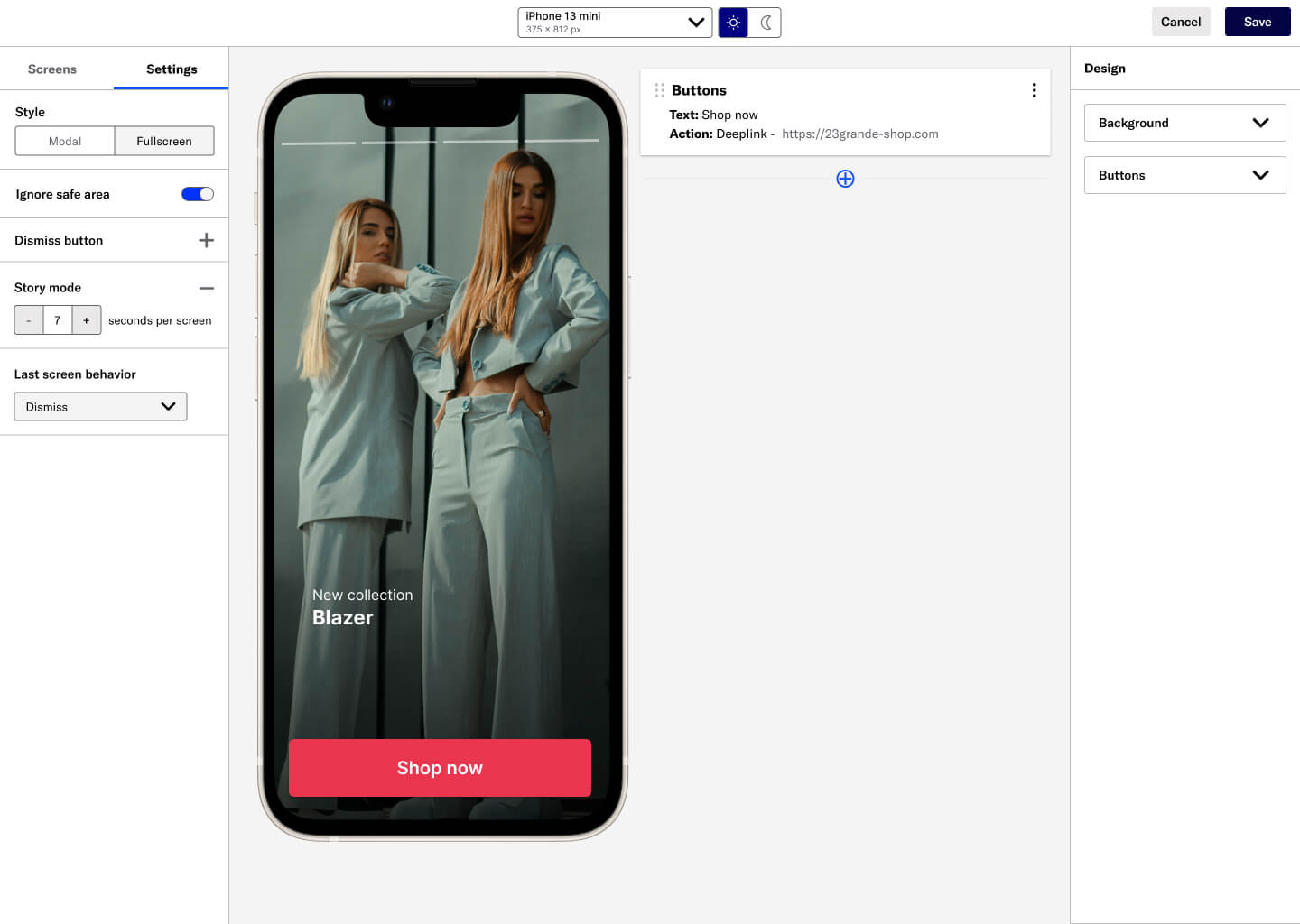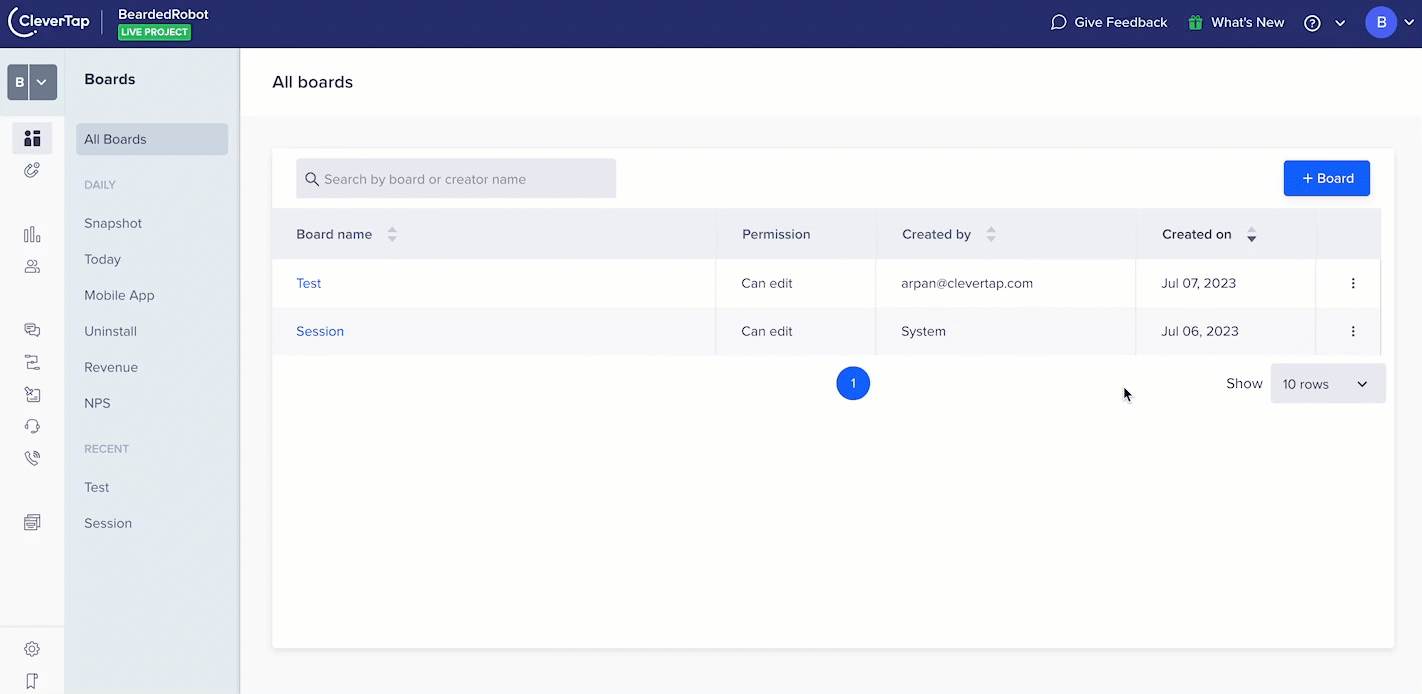Alternatives to Aimtell
1. Airship
+Pros
- Unified journey orchestration across 11 communication channels.
- Proven AI acceleration with 5x faster initial content draft production.
- Native mobile wallet integrations with superior engagement rates.
- Enterprise-grade reliability with 99.98% uptime SLA.
-Cons
- Product recommendation sophistication lags behind dedicated personalization platforms.
- Mobile application dependency creates applicability constraints.
- 38% of users require content refinement before deployment.
- Implementation complexity requires 3-6 months for complex journey orchestration.
One highlighted feature and why it's amazing
Accelerates initial content draft production by 5x compared to manual methods, enabling marketers to produce personalized email and push notification copy significantly faster.

Another highlighted feature of why it’s amazing
Leverages machine learning models trained on 3B+ devices to optimize send-time and channel selection through predictive agents.
2. Braze (BrazeAI™)
+Pros
- Advanced Behavioral Prediction
- Real-Time Processing Excellence
- Enterprise-Grade Scalability
- Comprehensive AI Integration
-Cons
- Implementation Complexity
- Premium Investment Requirements
- Data Quality Dependencies
- Change Management Demands
One highlighted feature and why it's amazing
The platform's core differentiator lies in its behavioral prediction algorithms that analyze customer data patterns to forecast future actions, including purchase likelihood and churn risk assessment.

Another highlighted feature of why it’s amazing
Braze unifies push notifications, email, and in-app messaging through real-time API integration, enabling coordinated customer journeys across multiple touchpoints.
3. CleverTap
+Pros
- Genuine AI-powered personalization capabilities backed by verified customer outcomes and independent validation.
- Proprietary technologies including TesseractDB™ and RenderMax™ create sustainable competitive advantages.
- Proven customer outcomes with consistent 4x conversion increases and 300% revenue growth documented in verified case studies.
-Cons
- Implementation complexity that can overwhelm organizations without sufficient technical resources and change management capabilities.
- Pricing transparency limitations require direct vendor contact for budget planning.
- Resource intensity represents a constraint for organizations with limited technical capacity or marketing team bandwidth.
One highlighted feature and why it's amazing
A comprehensive three-pillar AI engine that combines predictive, generative, and prescriptive AI for sophisticated customer engagement personalization.

Another highlighted feature of why it’s amazing
The platform's generative AI component, creates dynamic content for personalized customer communications across channels.
Other Alternatives
Klaviyo
OneSignal
PushEngage
How We Researched This Guide
About This Guide: This comprehensive analysis is based on extensive competitive intelligence and real-world implementation data from leading AI vendors. StayModern updates this guide quarterly to reflect market developments and vendor performance changes.
205+ verified sources per analysis including official documentation, customer reviews, analyst reports, and industry publications.
- • Vendor documentation & whitepapers
- • Customer testimonials & case studies
- • Third-party analyst assessments
- • Industry benchmarking reports
Standardized assessment framework across 8 key dimensions for objective comparison.
- • Technology capabilities & architecture
- • Market position & customer evidence
- • Implementation experience & support
- • Pricing value & competitive position
Research is refreshed every 90 days to capture market changes and new vendor capabilities.
- • New product releases & features
- • Market positioning changes
- • Customer feedback integration
- • Competitive landscape shifts
Every claim is source-linked with direct citations to original materials for verification.
- • Clickable citation links
- • Original source attribution
- • Date stamps for currency
- • Quality score validation
Analysis follows systematic research protocols with consistent evaluation frameworks.
- • Standardized assessment criteria
- • Multi-source verification process
- • Consistent evaluation methodology
- • Quality assurance protocols
Buyer-focused analysis with transparent methodology and factual accuracy commitment.
- • Objective comparative analysis
- • Transparent research methodology
- • Factual accuracy commitment
- • Continuous quality improvement
Quality Commitment: If you find any inaccuracies in our analysis on this page, please contact us at research@staymodern.ai. We're committed to maintaining the highest standards of research integrity and will investigate and correct any issues promptly.